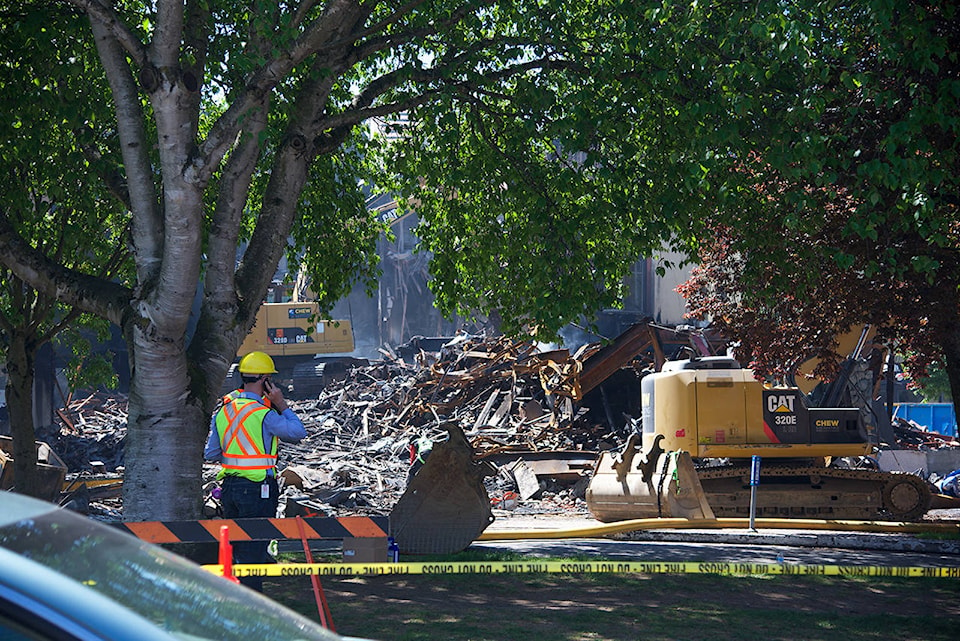The Capital Regional District is sending a warning to the City of Victoria after calculating the amount of space it took to clean up the debris from the Plaza Hotel fire, saying that an emergency plan needs to be put in place for large-scale disasters such as an earthquake.
On May 6, 2019 the empty four-storey building at 603 Pandora Ave. was consumed by a fire which investigators later determined to be arson.
READ MORE: Victoria Police confirm downtown Plaza Hotel fire was arson
In a report coming to the CRD’s Environmental Services Committee meeting this week, the district breaks down the aftermath of this fire.
A total of 186 truckloads of waste, or approximately 1,400 tonnes was brought to the landfill from the fire.
Cleaning up an entire building and bringing it to the landfill isn’t common, said Larisa Hutcheson, general manager of Parks and Environmental Services at CRD, and the process was made even more complicated because the Plaza Hotel was known to be filled with asbestos.
“Items that could contain asbestos need to be buried in large, plastic-enclosed bags to ensure harm doesn’t come to employees,” Hutcheson said, adding that contaminated materials are designated to a special part of the landfill. “The debris from the Plaza Hotel took up 40 per cent of the controlled waste space we use in a year.”
If all of that waste can come from one 16,000 sq. ft. building, the report explains, the City could face an unparalleled amount of waste in a larger-scale disaster.
“The municipality with the biggest potential for significant disaster debris in a seismic event is the City of Victoria due to the large number of non-reinforced masonry buildings in the downtown core,” the report reads.
ALSO READ: Be Prepared – Black Press Media’s Greater Victoria emergency preparedness series
Comparatively, the 2011, 6.3 magnitude earthquake in Christchurch, New Zealand, resulted in hundreds of buildings collapsing or requiring demolition, resulting in between 1.5 and 4 million tonnes of solid debris.
“Municipalities have the direct responsibility for disaster debris management,” Hutcheson said. “Right now there aren’t a lot of finalized plans we can dig our teeth into.”
Presently the City of Victoria is working on developing a disaster debris management plan, but the CRD is also encouraging local municipalities to look at region-wide efforts, as has been done with Metro Vancouver through the Integrated Partnership for Regional Emergency Management (IRPEM). Presently the Capital Region has an agreement with Emergency Management BC through the Regional Emergency Management Partnership (REMP) but this contains no specific plans for debris management.
Having a plan in place, Hutcheson said, would help the CRD continue with its goal of keeping the landfill’s lifespan to 2100. With a significant enough disaster, however, this lifespan could be greatly reduced.
Like us on Facebook, send a Tweet to @NicoleCrescenziand follow us on Instagram
